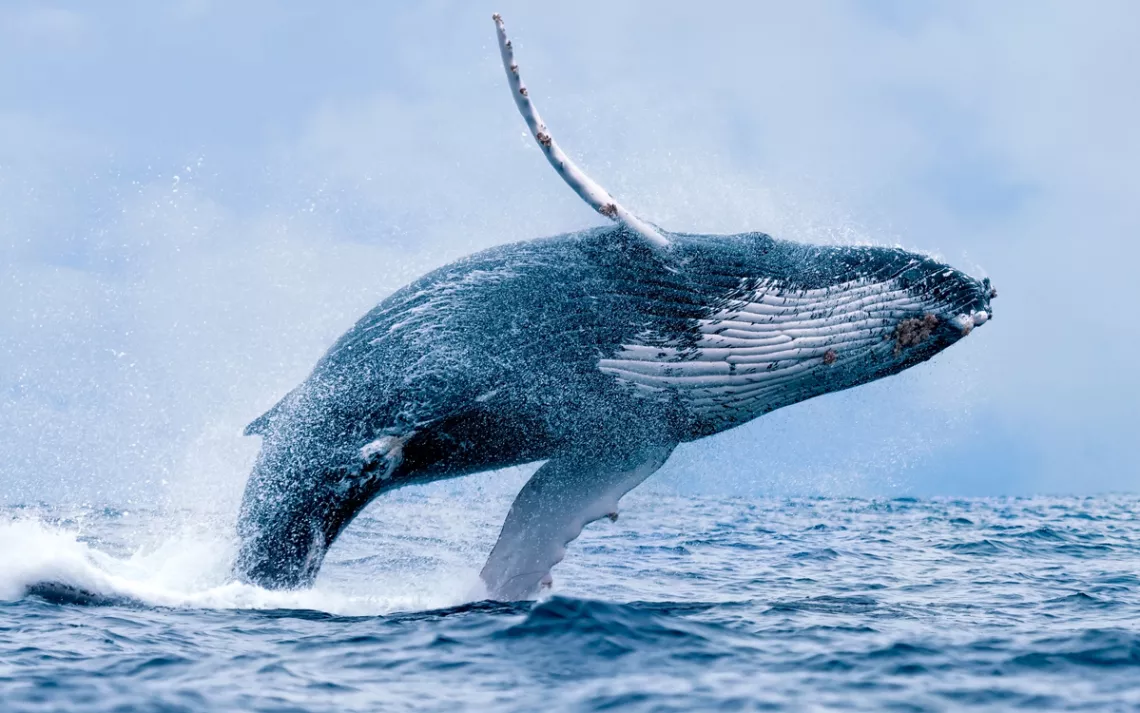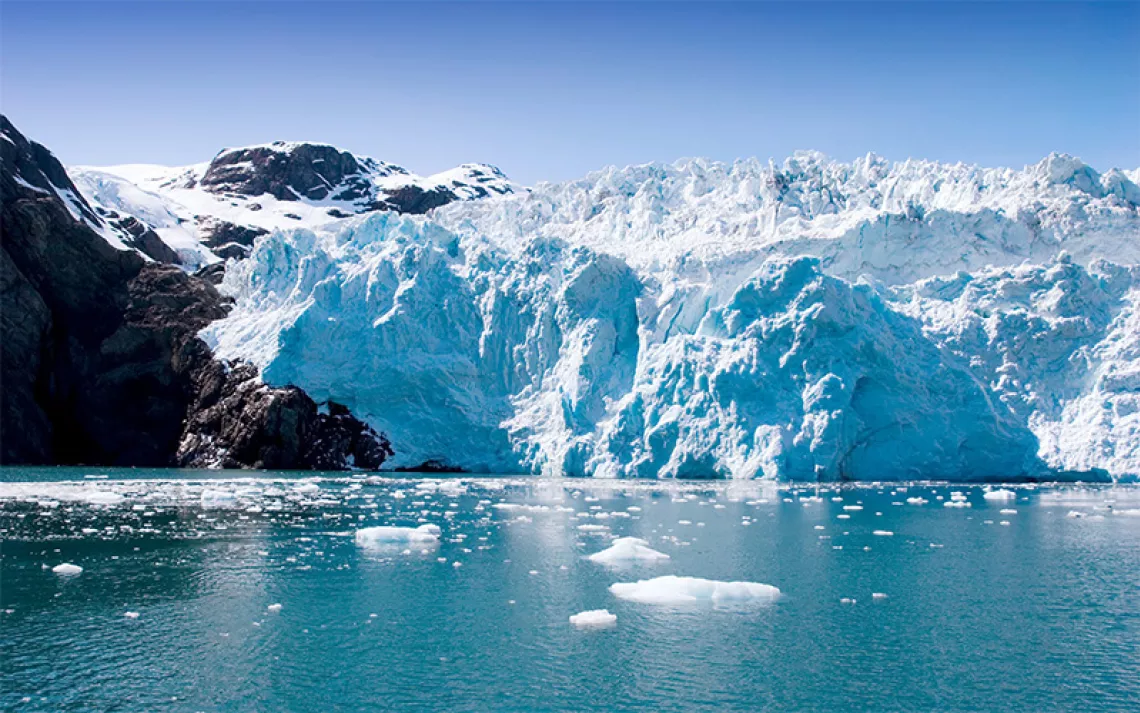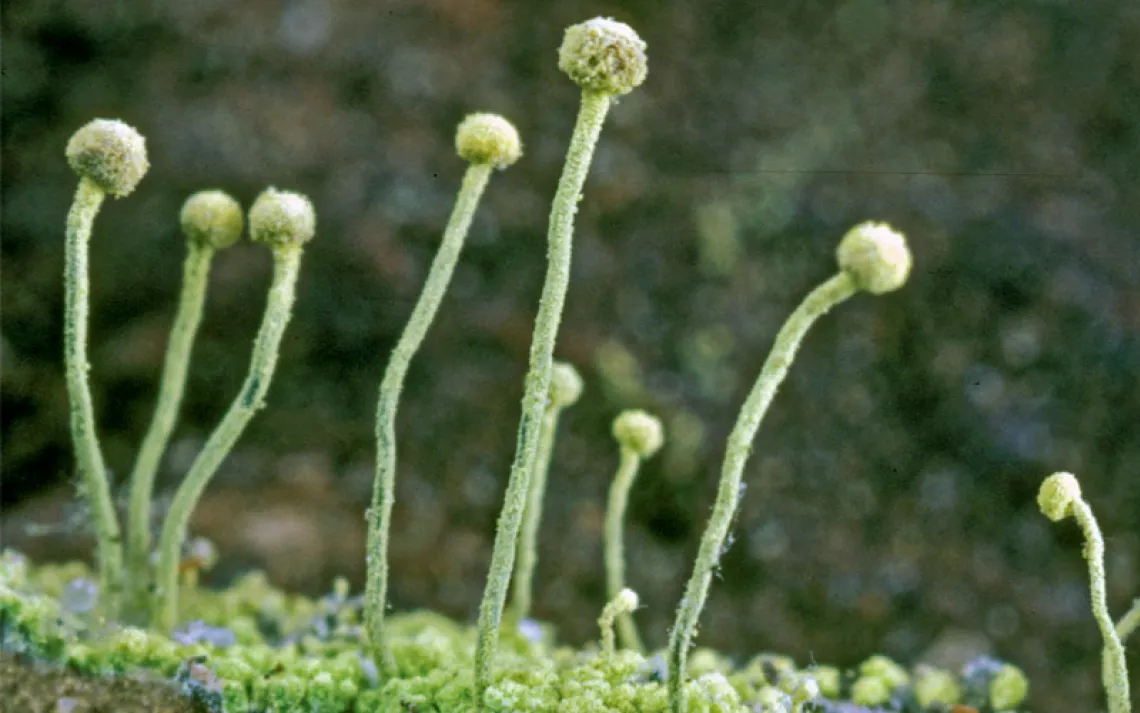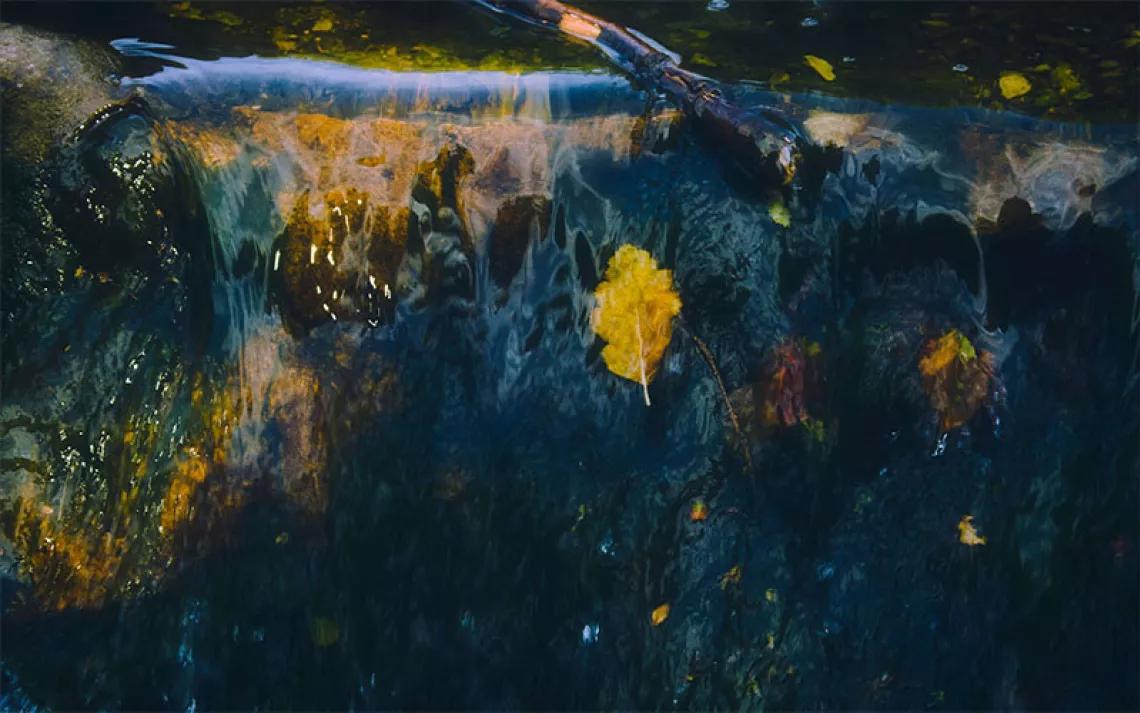Whales Like Us
Do cetaceans qualify for the culture club?

Photo by IStock | Paul Wolf
In certain parts of the world, humpback whales have been seen spiraling through the water together, blowing bubbles like they’re moonlighting at a Vegas show. The bubbles form a column, trapping any fish at the center. The fish could swim through the bubbles, but they’re confused because they’ve never encountered anything like the bubble curtain. It’s too late for them anyway—the whales, having completed the column, now plunge to the bottom and swim upward, gobbling up fish as they go until they surface together in a plume of water, mouths open to the sky, effectively the most barnacle-encrusted synchronized swimmers ever.
It’s an impressive example of teamwork in the pursuit of herring. But it’s also a window into a great whale mystery, because it seems like some humpbacks are teaching each other how to do it. In the early 1980s, a single humpback was spotted in the Gulf of Maine doing a variation on bubble feeding that involved a little tail slap at the beginning. Over the next three decades this tail slap, dubbed “lobtail feeding,” spread to hundreds of other humpbacks who summered in the area.
Some people look at information like this and conclude that whales, like humans, are not only able to develop idiosyncratic ways of living in the world, but are also able to teach those ways to each other, creating something that is basically whale culture. A paper published Monday in Nature: Ecology & Evolution, “The Social and Cultural Roots of Whale and Dolphin Brains”—authored by Kieran C.R. Fox, a neuroscientist at Stanford University, and two other scientists, Michael Muthukrishna, and Susanne Shultz—takes this idea and runs with it. The researchers’ theory: Whales and dolphins (a.k.a. cetaceans) independently evolved the kind of complex social behaviors that are usually considered the exclusive attributes of humans and other primates, despite having gotten there with a very different brain structure.
Fox’s curiosity about cetacean culture goes way back. As a teenager, he ran across the books of John C. Lilly, a neuroscientist who studied dolphin cognition in the 1960s. Today, Lilly’s methods and findings aren’t considered scientifically reputable. His studies with captive dolphins went off the rails when an attempt to develop a common language led to a dolphin that pressured lab assistants for handjobs. Lilly took to dosing himself and the lab’s dolphins with LSD in an attempt to make contact (the dolphins didn’t even seem to know they were on acid). But Lilly’s certainty that dolphins were in possession of a tremendous, alien intelligence inspired a whole generation of young scientists.
In the first year of his PhD program, Fox wondered why there wasn’t a comprehensive database of brain size, social structures, and cultural behaviors across cetacean species, the way there was for primates. “I thought, “Why hasn’t anyone done this before?” Fox says. “I know why now—because it took seven years to get all the data together and publish it.” Another student in Fox’s program, Michael Muthukrishna, signed on to help.
Some of the data was easy to get, like the data on what each species ate—that had already been collected and bound in marine mammal encyclopedias. Information on brain size was scattered, but much of it had been pulled together by other scientists in various ways.
The data Fox and Muthukrishna collected showed that, on average, cetaceans spotted in larger groups also had larger brains than the ones in small groups. But associations between group size and brain size are much more nuanced in primates, and they suspected that this might be the case for whales and dolphins as well.
At this point, Fox cold-called Susanne Shultz, a senior research fellow in biology at the University of Manchester, and asked her if she would be willing to sign on to the study. “I needed someone senior who really knew their stuff,” Fox remembers thinking. “This is a complicated study with complicated analyses.” When they looked at the data more closely, they realized that a simple relationship between group size and brain size wasn’t the entire story—the cetaceans that lived in mid-sized groups of five to 10 individuals, like orcas, actually had larger brains relative to their body size than the ones that herded in pods of hundreds, like some oceanic dolphins.
Shultz pushed them to take the study even further and look at the breadth of social behaviors each species exhibited (also known as "social repertoire"). That proved to be the hardest data to pull together—information on social behavior was scattered across thousands of papers, though Fox and Muthukrishna only wound up using data from a few hundred of them for the final project. As it turned out, social repertoire was also correlated with brain size. “It’s not just the size of the group,” Fox says. “The depth and variety of the social interactions also really matter.”
This whole idea—that whales and dolphins not only have intelligence but also culture—is a controversial one. Scientists spent decades stalking chimps at close quarters, watching them show each other how to hunt with sticks and use moss as sponges before a general consensus was reached that chimps, like humans, had different cultures.
In British Columbia, there are two populations of orcas: one that travels up and down the coast of the province, eating mostly chinook salmon and another that travels all the way from British Columbia to California and back again, hunting other marine mammals like seals and sea lions. The resident BC orcas have a family structure in which mothers, daughters, and grandmothers travel together for their entire lives, entertaining a rotating cast of male offspring and gentleman callers. The transient BC-to-California orcas move in smaller groups, with less permanent family bonds. Could this be chalked up to culture, or is it the result of something else?
As Fox puts it, “No one is out there with whales 24/7 like Jane Goodall was with the chimps.” Scientists have tracked whale migration routes using GPS. They’ve tracked individual whales for decades and drawn up family trees to chart entire whale dynasties. You see changes in behavior spreading over time and infer that they taught each other, but actual teaching has almost never been observed. Whales hunt differently, sure, but it’s not like they have a university where they all go to learn the latest social behaviors.”
Like humans, whales and dolphins occupy nearly every corner of the planet. The evolutionary process appears to have played out in a similar way in whales as it did in primates: Cetaceans with larger brains developed the ability to form alliances and work together to hunt for food, navigate, and adapt to new situations. The complexity of those alliances gave cetaceans with even larger brains a genetic edge.
Even though a big brain makes it more of a challenge to stay alive metabolically (brain tissue uses a huge amount of energy), it can also make one a more inventive hunter. “An orca can go from eating salmon to tangling with a squid, to taking down seals or even other whales,” says Fox. “They’re estimated to feed on up to 140 different species. And mapping out a wide range of territory requires a more complex brain. Orcas live in the Arctic and they live in the tropics. That means having to adapt to different environments and pursue different kinds of prey. Having a big brain helps make that possible.”
Still, even though we now know that whales—not all, but some—hunt together, play with each other, babysit each other’s offspring, have regional dialects that are distinct from each other, and seem to call each other by name, there’s a lot more left to learn. “Whales spend 95 percent or more of their time underwater,” says Fox. “Most of what we see is when they pop up to the surface to breathe. There’s so much we don’t know.”
 The Magazine of The Sierra Club
The Magazine of The Sierra Club







